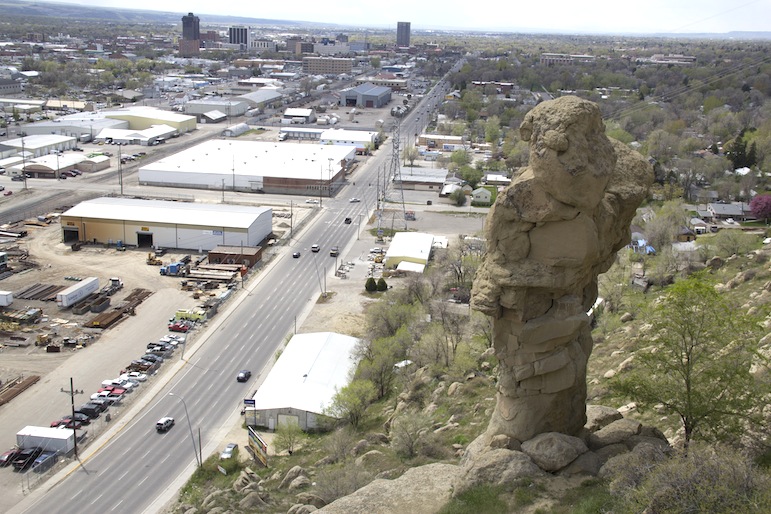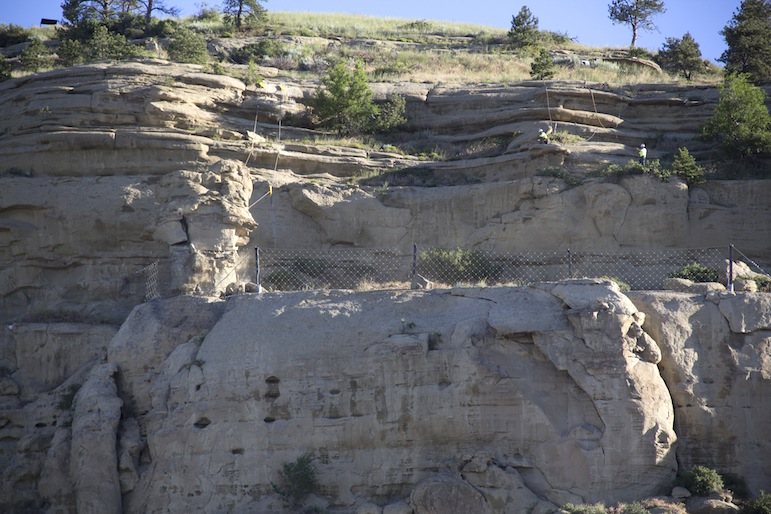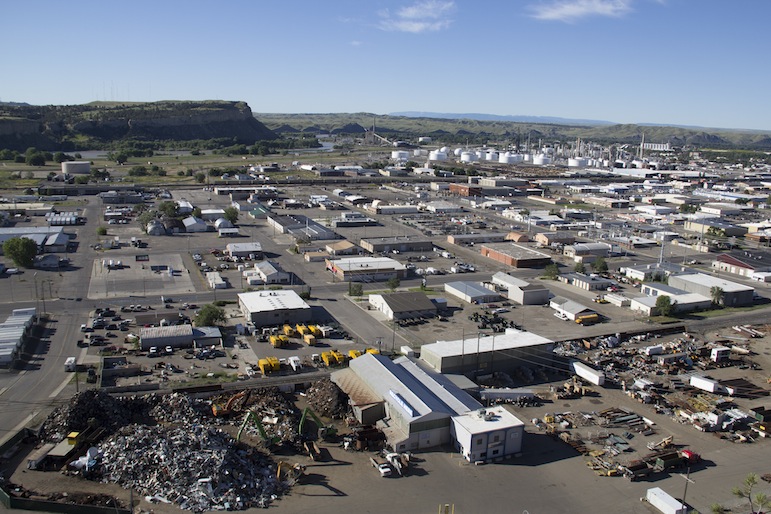
Ed Kemmick/Last Best News
Workers with GeoStabilization International pry a big, loose piece of sandstone off what remained of Santa Claus Rock Sunday morning.
Santa Claus has left the Rims.
The 150-plus-ton sandstone formation that was dubbed Santa Claus Rock by the earliest settlers in the Yellowstone Valley was reduced to a pile of boulders and rubble early Sunday.
The job went without a hitch and with no damage to Sixth Avenue North, the busy one-way street above which the formation towered. Two bulldozers pulled heavy cables attached to the pillar of sandstone, and most of it toppled over shortly after 7:15 a.m., coming to rest on the wide rock shelf on which the formation sat.
Workers with GeoStabilization International then went to work on what remained of the foundation of the rock, using pry bars and inflatable rubber bags to bring down unstable boulders and rock slabs.
The project marked the end of GeoStabilization’s work in Billings. The Colorado company brought crews and equipment to Billings in mid-May to trim off dangerous areas of the Rims above Zimmerman Trail, a project funded by the state Department of Transportation.
While the company was here, the city of Billings hired it to do similar work above Sixth Avenue North, after Terracon, a local engineering firm, identified rocks and formations, including Santa Claus Rock, that appeared mostly likely to fall on their own.
Sixth Avenue was closed at 2 p.m. Saturday so dirt berms could be created along the north side of the roadway, to catch any rock that fell off the Rims when Santa Claus was being taken down. The berm did its job Sunday, stopping a dozen or more boulders that tumbled down during the cleanup work on the formation.
Geostabilization crews, over the previous two days, had also installed flexibile steel fencing in front of the Santa Claus Rock, in case it fell away from the ledge. The thick fencing was supported by iron beams driven 4 feet into the ledge, with anchor cables on either end attached to bolts driven 8 feet into the Rims.
City Engineer Debi Meling said at 7 a.m. that the crew was ready to go.
“We’re not messing around,” she said. “Church is at 10.”
Sure enough, the cables wrapped around the formation went taut at 7:15 and clouds of dust started rising off the rock. The first tug wasn’t quite enough, but after a five-minute wait the bulldozers went to work again, and this time the formation went over to the side, landing with a loud whump.
Santa Claus Rock was also known, apparently, as the Sentinel by the Crow Indians. Artist Rich Clawson, who used to own property near the site, said he was once told by a Crow historian that the rock was one of seven Sentinels that were thought to stand watch over a burial ground on top of the Rims.
The other six Sentinels came down in an earthquake that preceded the smallpox epidemic of 1837, Clawson said he was told.
Meling said the GeoStabilization workers would do some more cleanup and probably leave town later Sunday.
“On a plane to the next big rock,” she said.
Here are some more photos of the process from Sunday morning:
Ed Kemmick/Last Best News permalink
It hits the deck.







